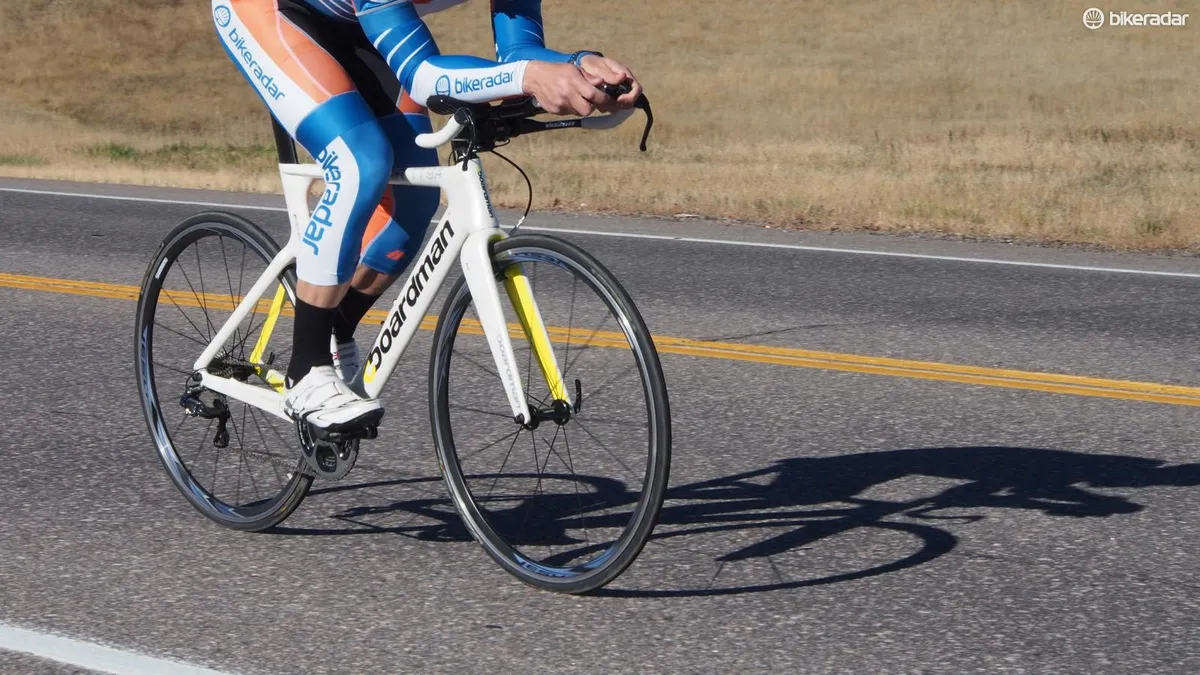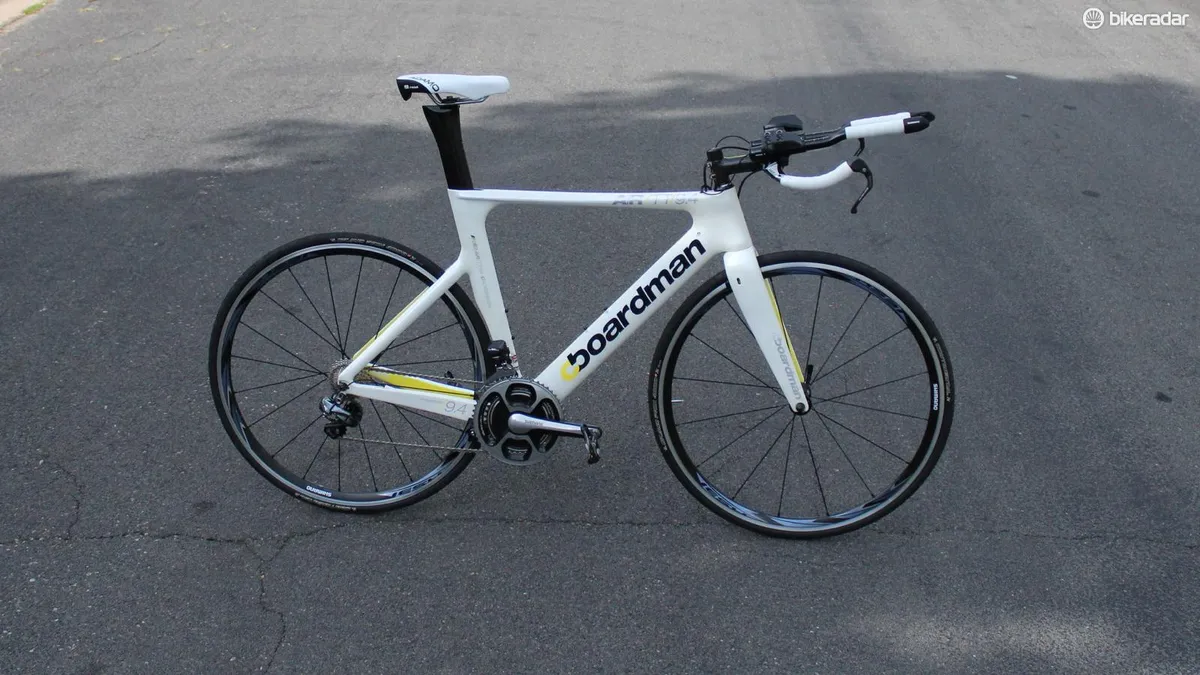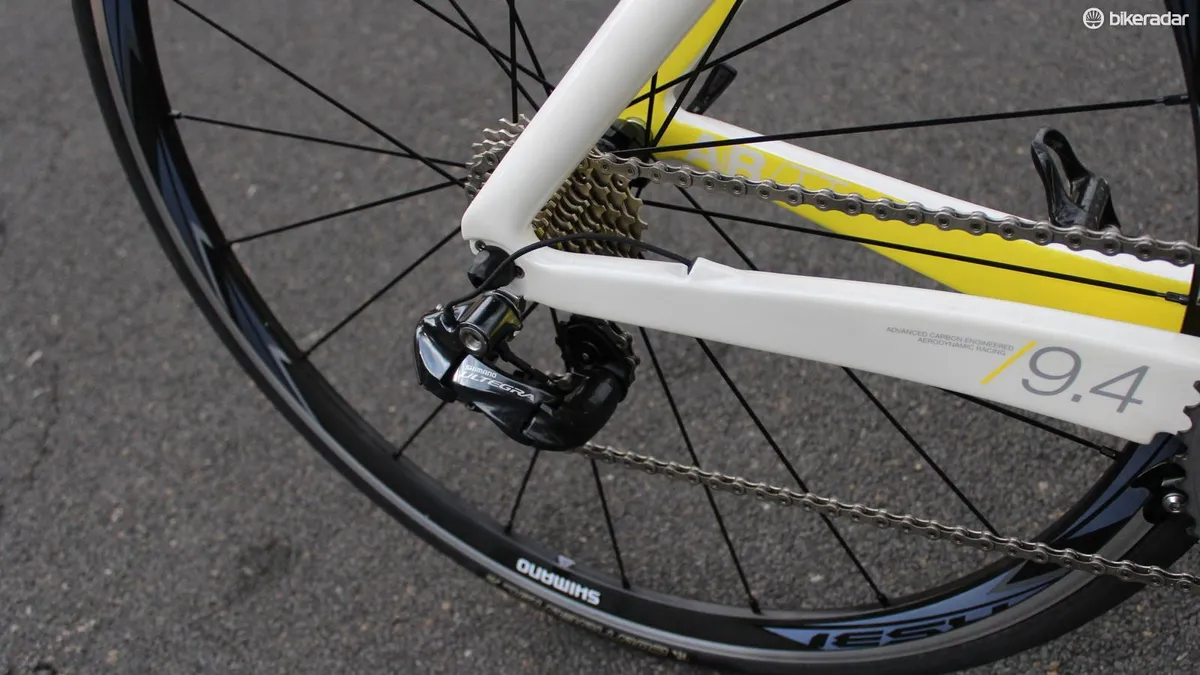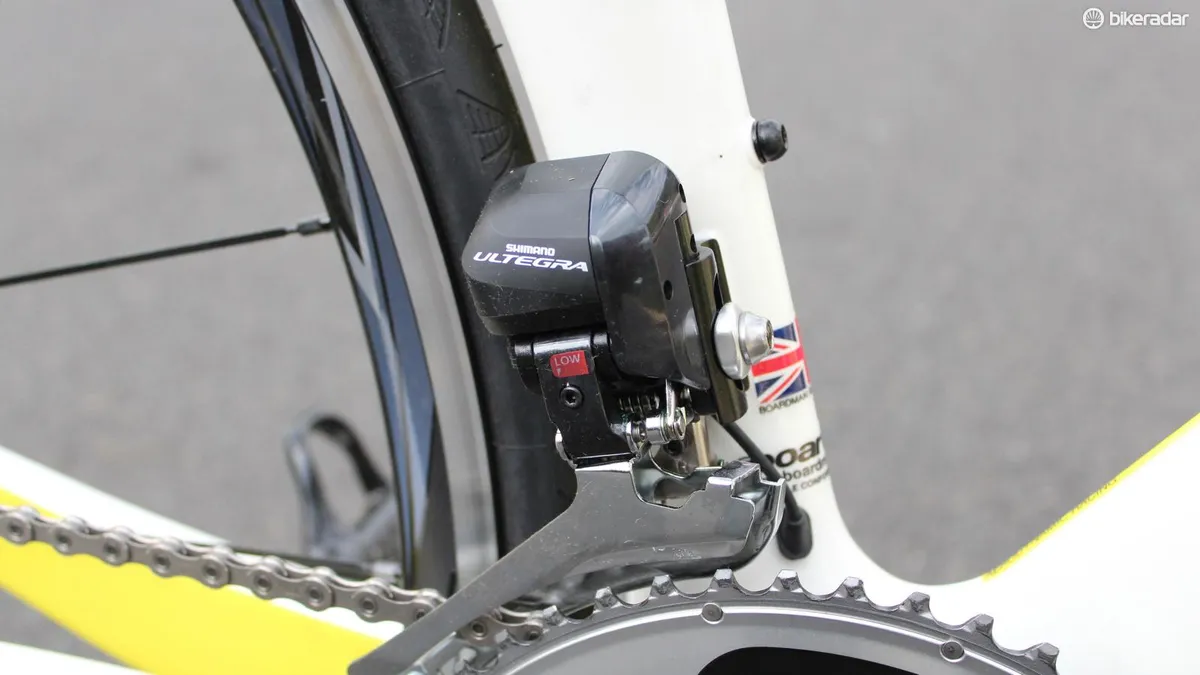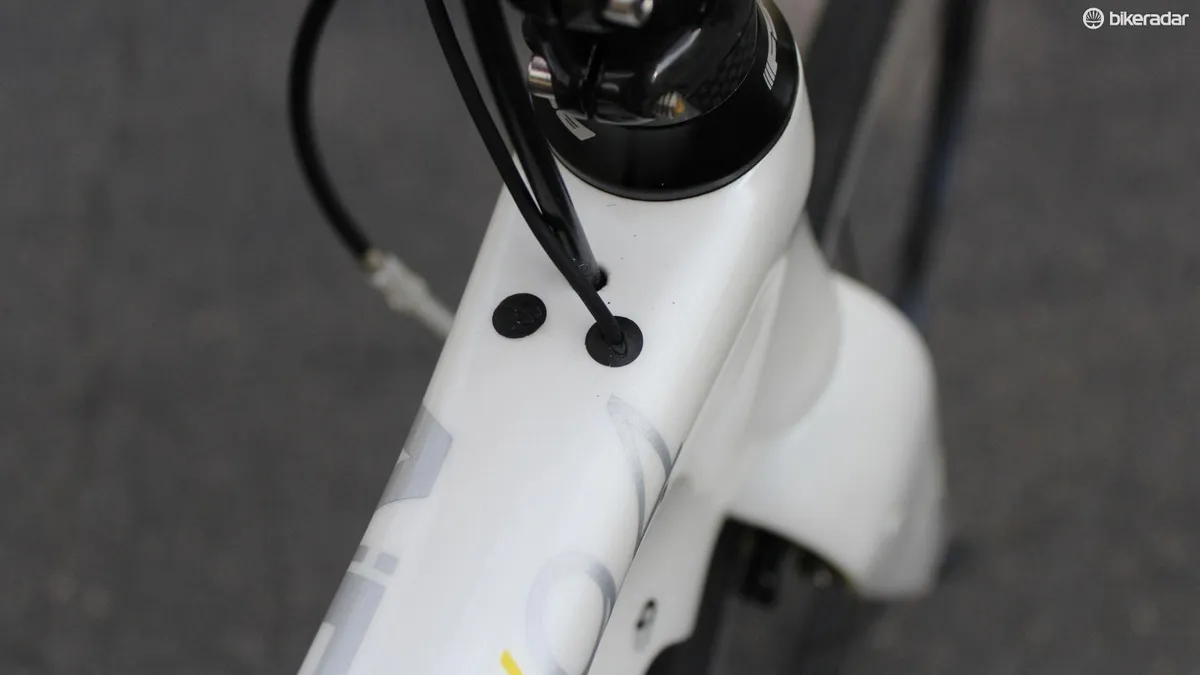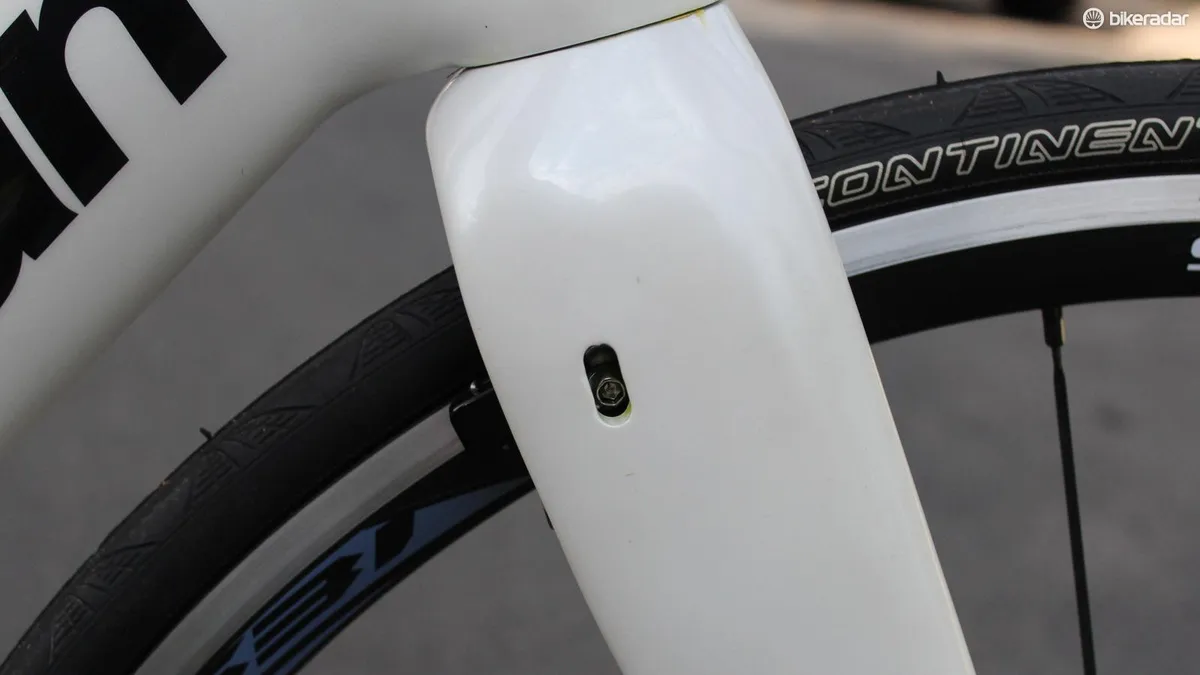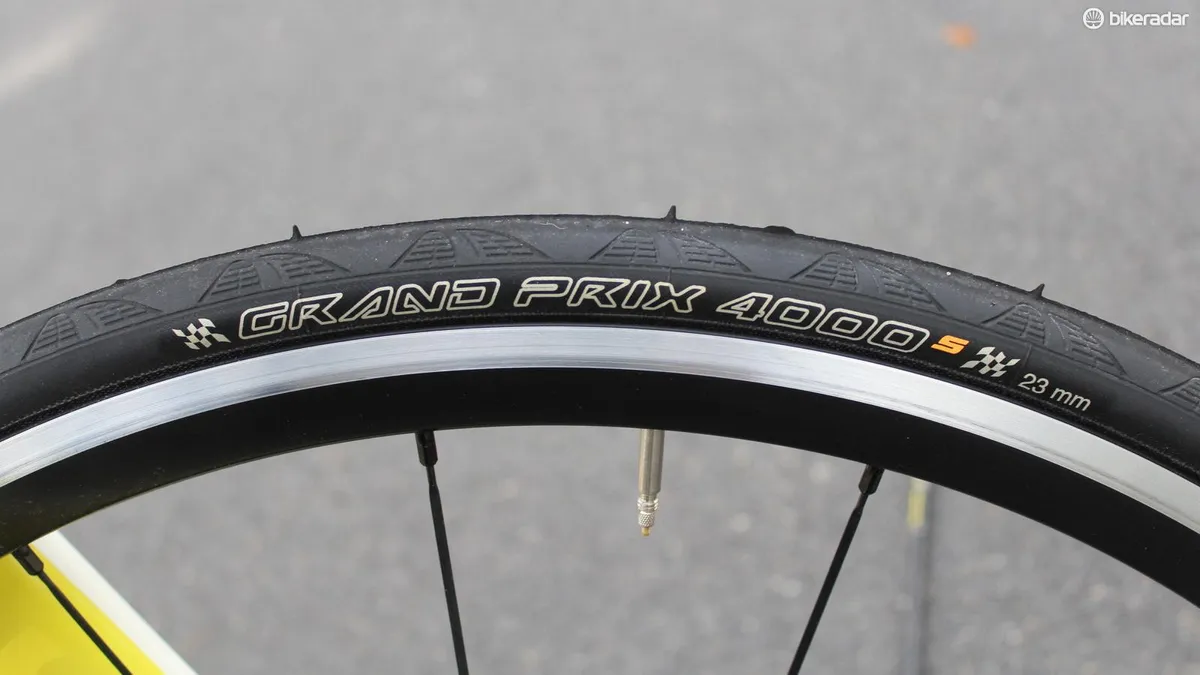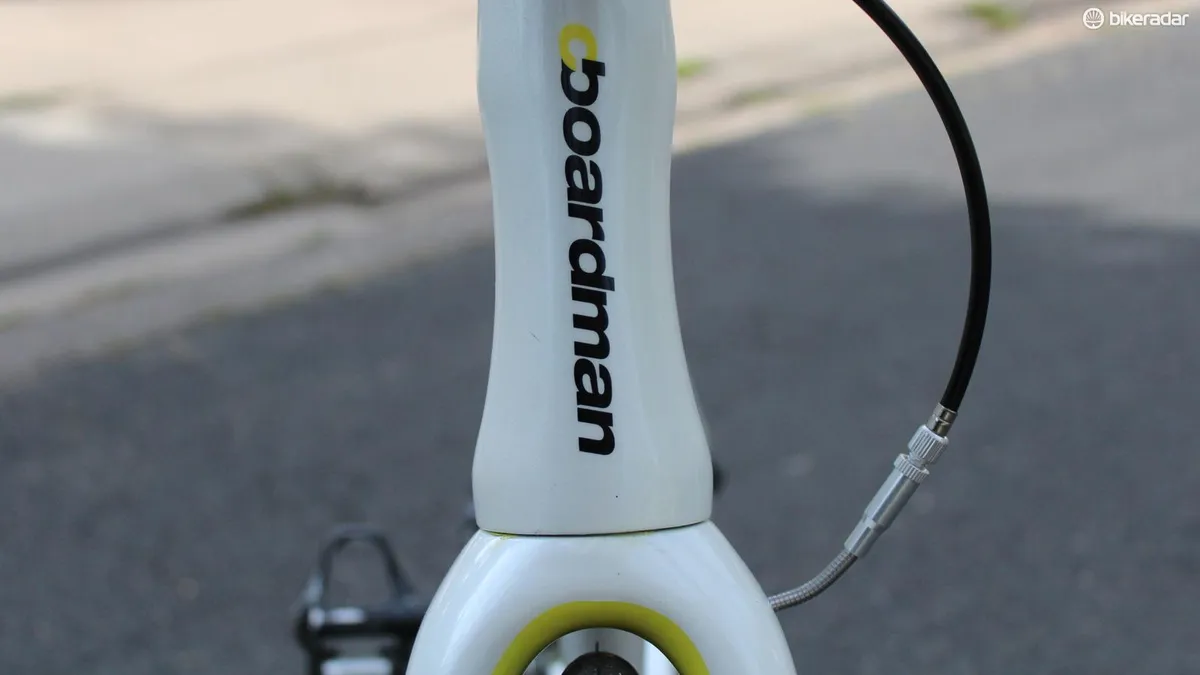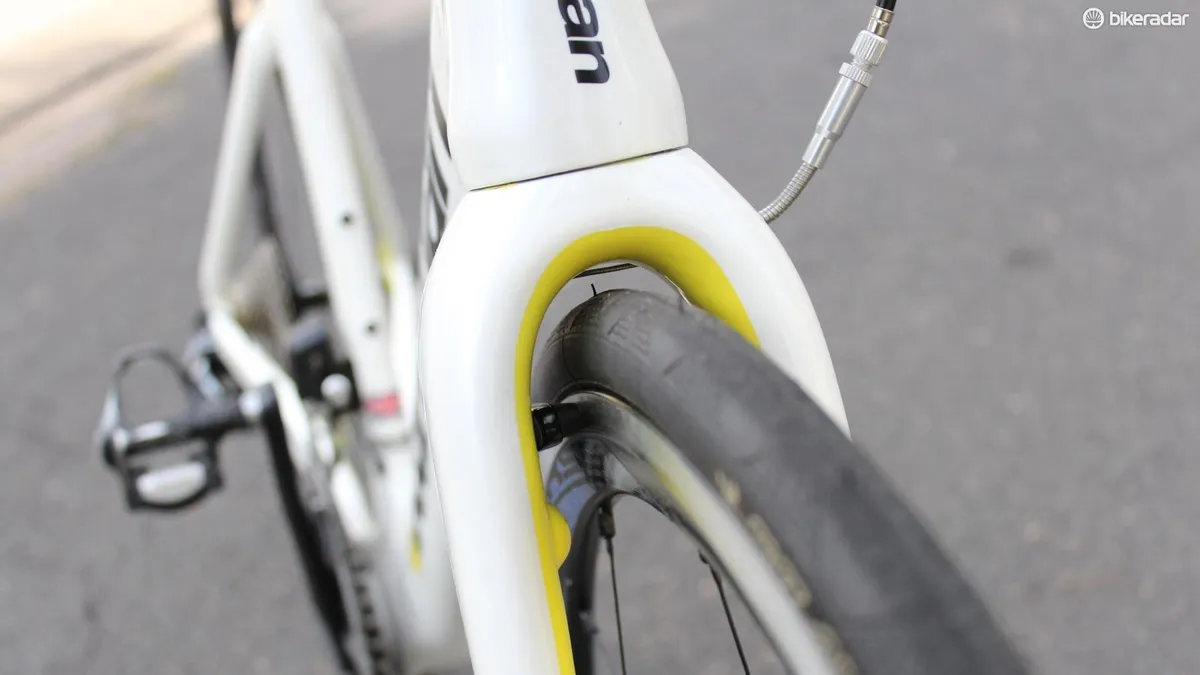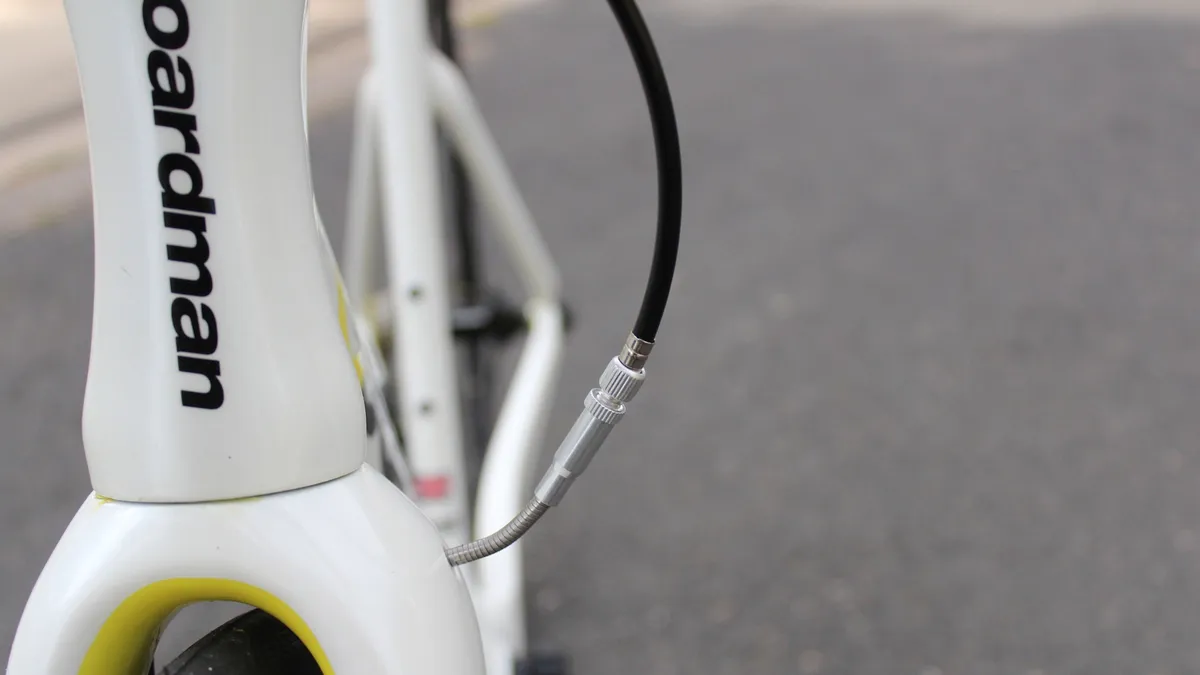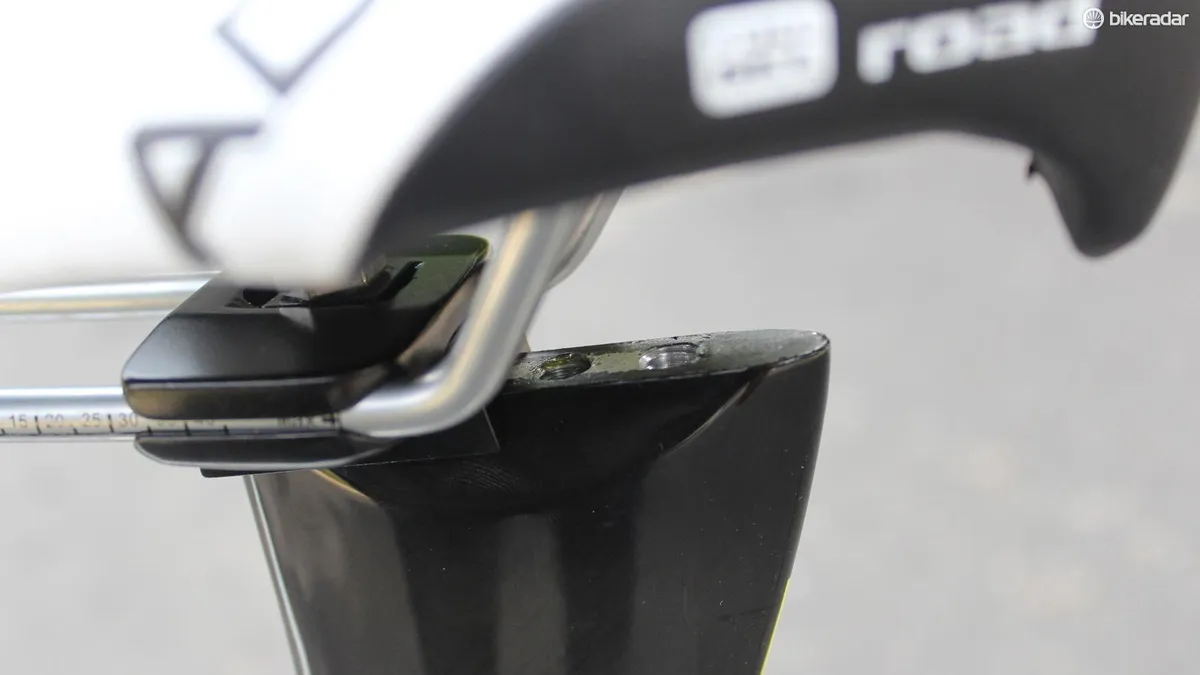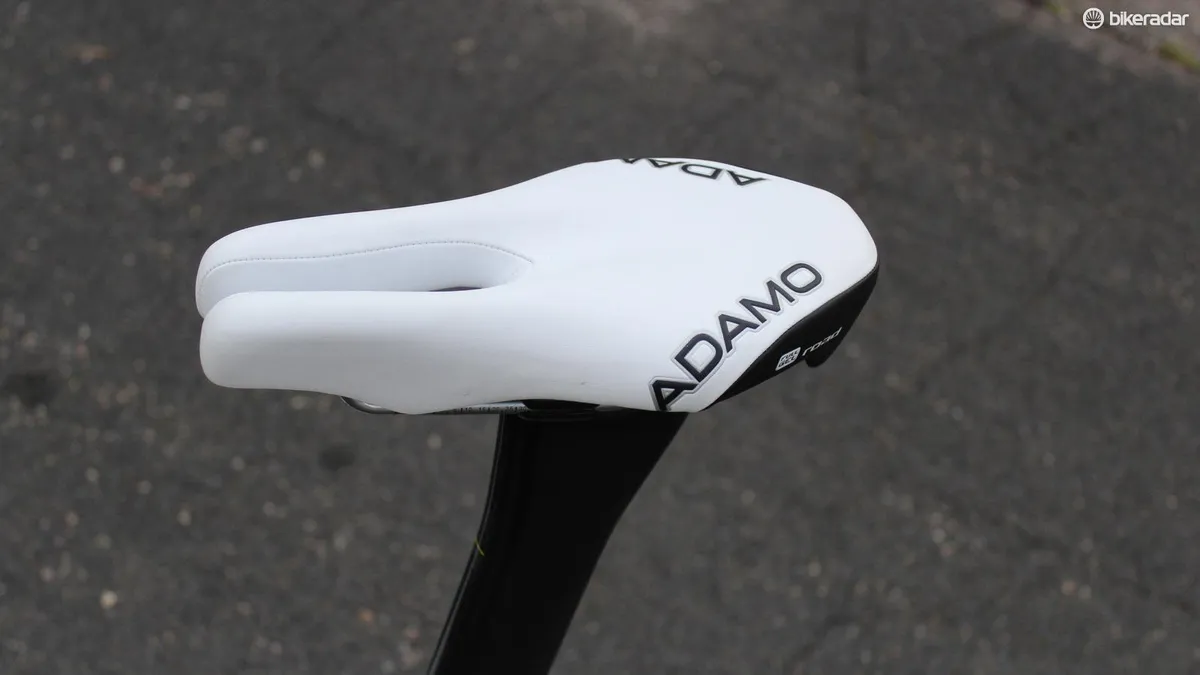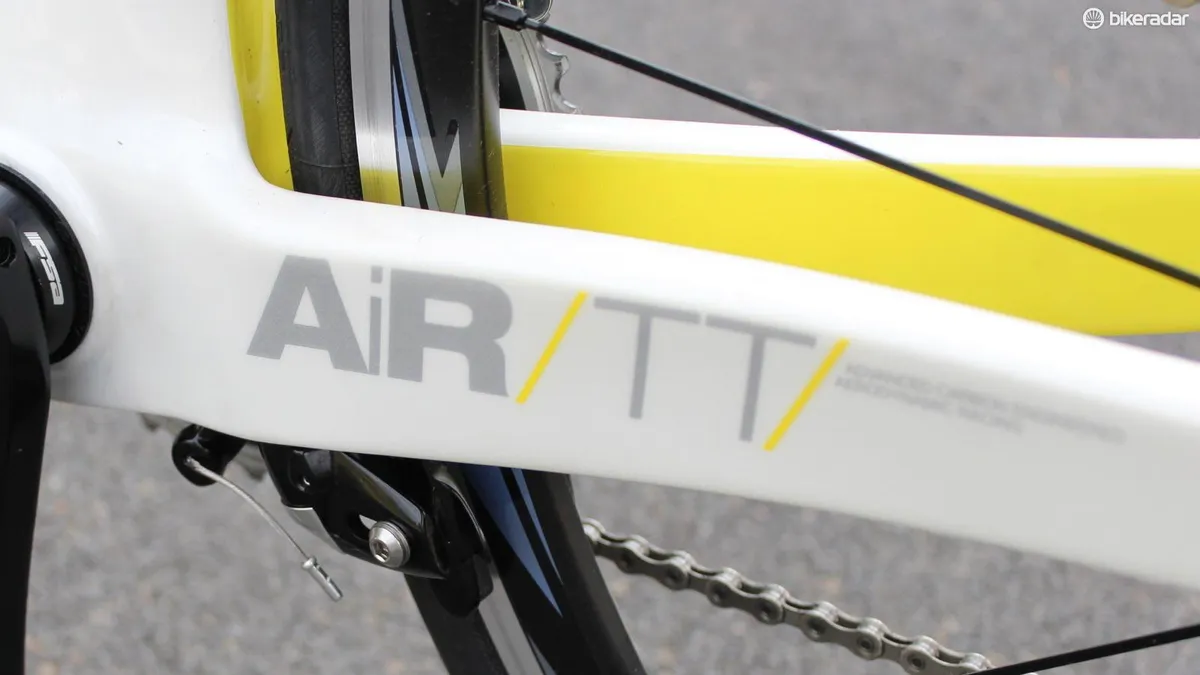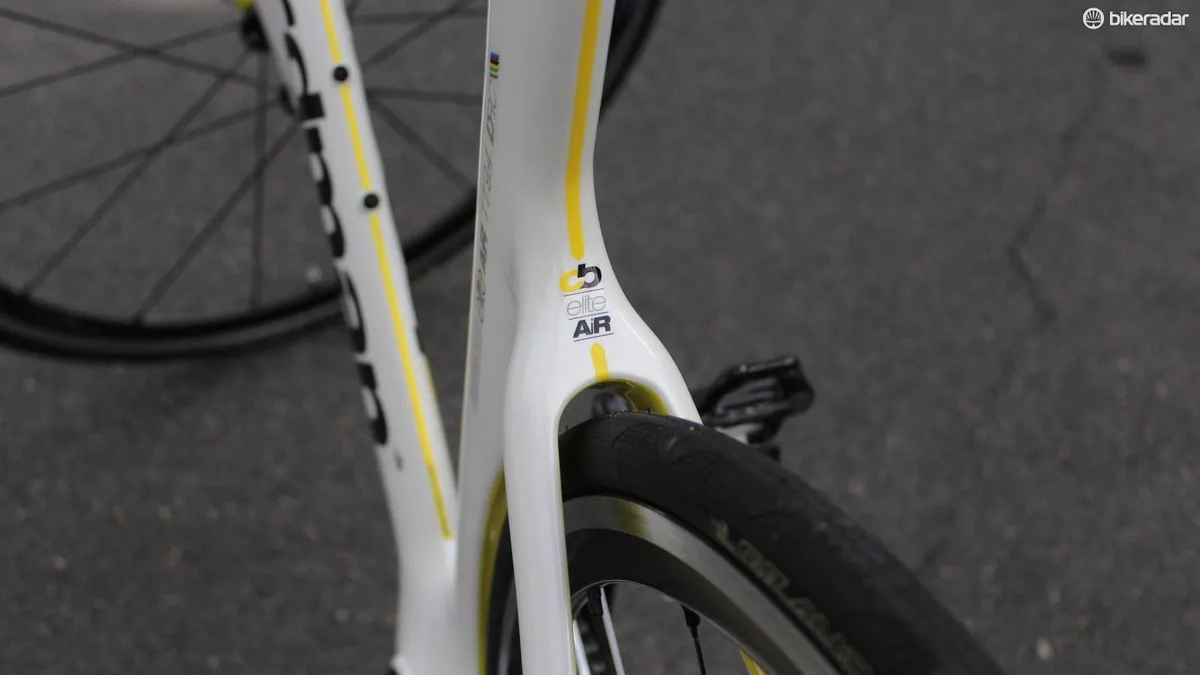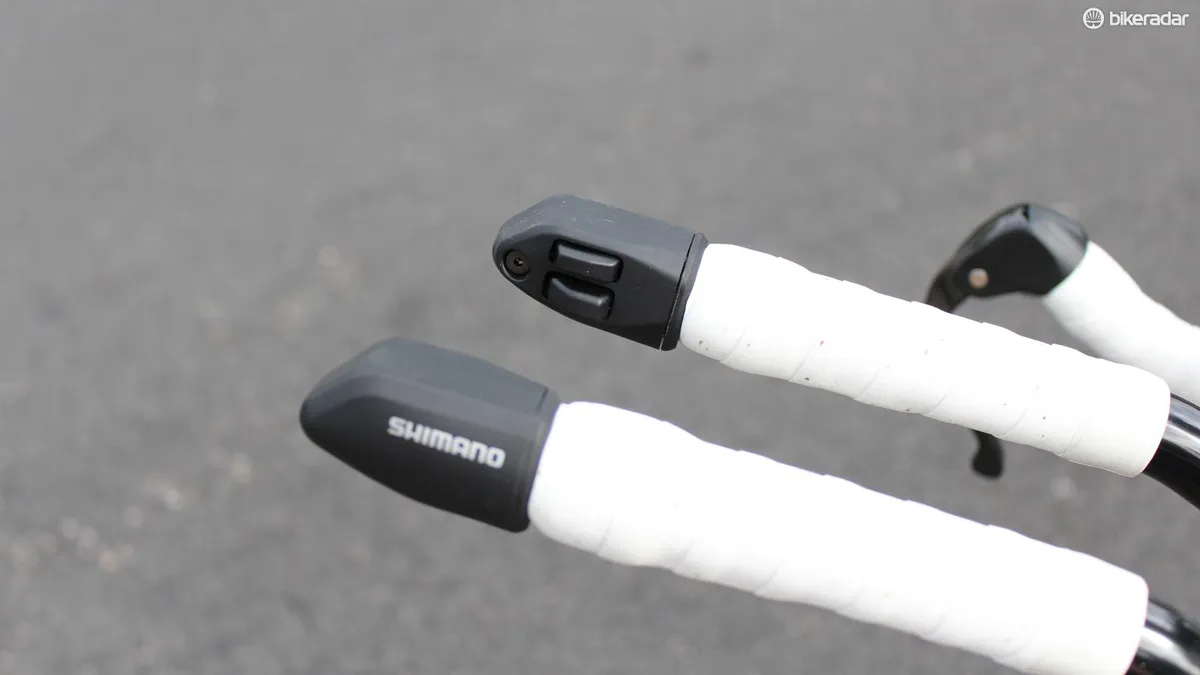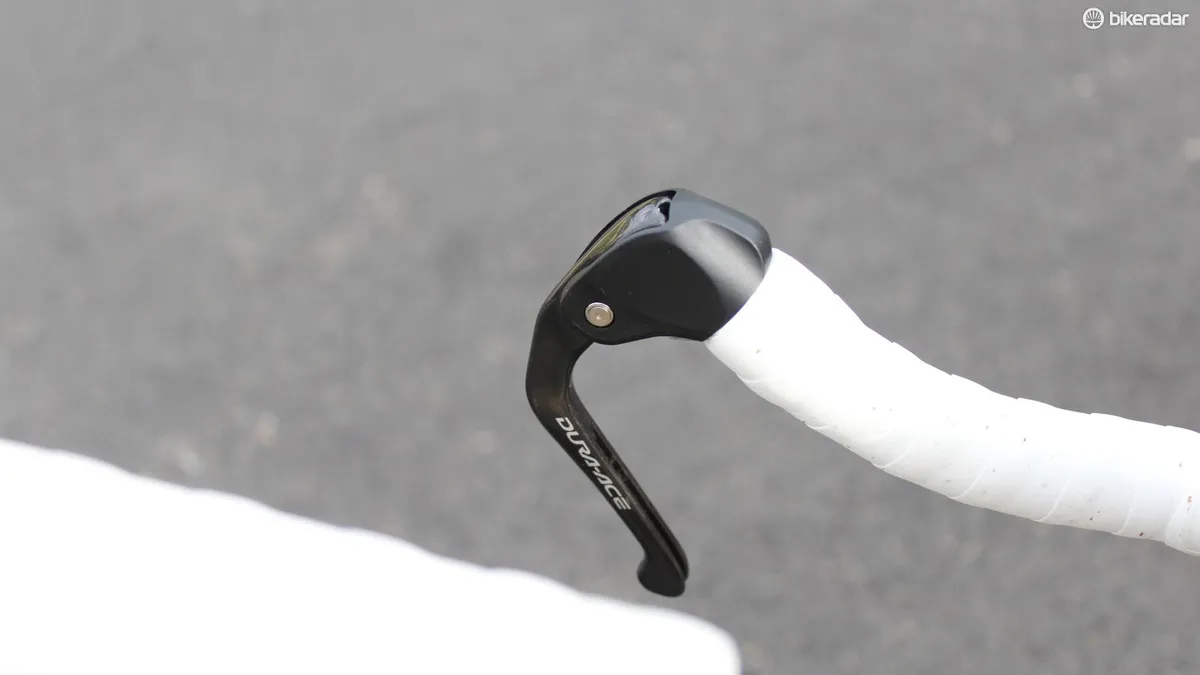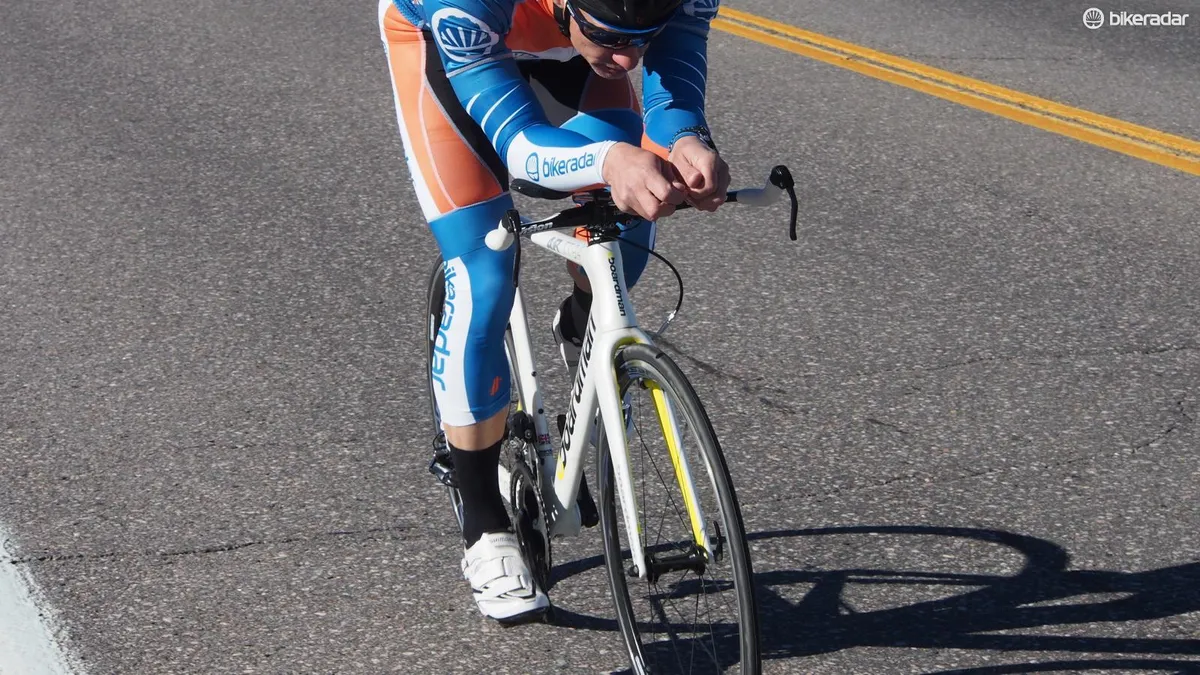The Boardman AiR/TT 9.4 Di2 is a high-value machine for time trials and triathlon, with a four-position seatpost offering huge fore/aft adjustability and quality parts delivering a luxury ride. Two oversights knock this bike back, though: no Di2 shifting at the cowhorns and an inability to really slam the saddle forward, despite all the adjustability.
- Highs: Clean, aero frame; good handling manners when in the aerobars; dependable wheels; quality Conti rubber; high-end saddle
- Lows: No Di2 shifting at the brake levers misses the point of Di2; can't slam saddle right over the BB; head tube angle might feel steep for some
Ride and handling
While decidedly a speed machine, the AiR/TT 9.4 doesn't have drastic geometry, so those coming from road bikes won't feel too out of their element. Riders used to very slack head tubes on tri bikes, however, might find the 73-degree head tube a bit quick in its handling.
Short (395mm), beefy chainstays make for efficient acceleration and power transfer in general. The bike feels eager to go, responding to pedal inputs without any perceptible waste.
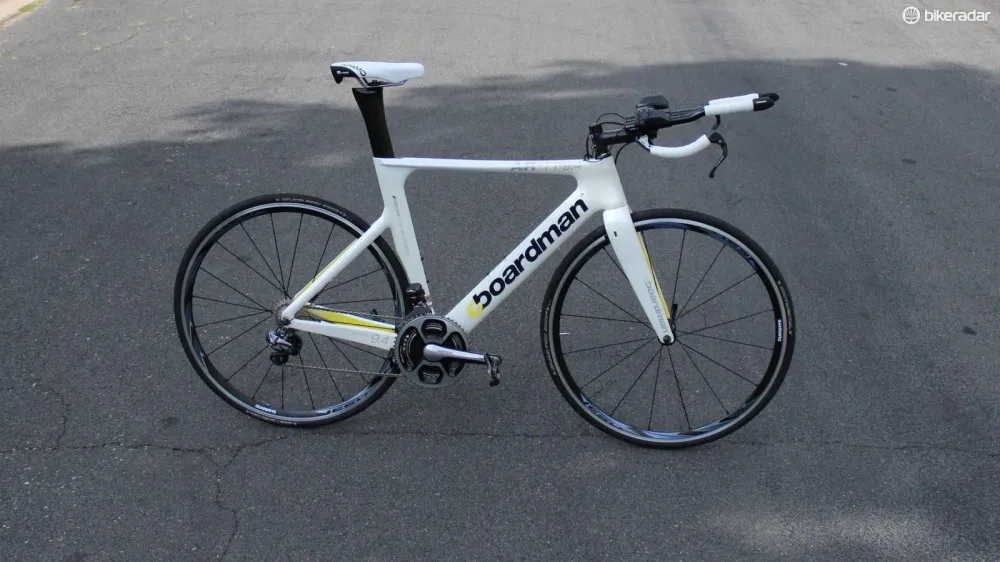
Component selection on the 9.4 Di2 is excellent, with Shimano Ultegra Di2 drivetrain, ISM Adamo saddle and Continental Grand Prix 4000 clinchers
As with any TT/tri bike, how you set up your position has a huge impact on how the bike handles. Here, the standard stem and aerobar make dialing in your fit straightforward. The Vision arm pads combine with the ISM Adamo saddle — a very nice touch as a stock saddle — for a plush, supportive interface.
Despite the four possible saddle-clamp positions, we weren't able to get the saddle tip even with the BB. However, won't necessarily be an issue for other riders who don't want an aggressively forward position.
The massive down tube can have a bit of a sail effect in cross winds, but the relatively low-profile wheels are easy to handle.
Besides the slightly steeper head angle, the bike sits a lot higher than TT/tri rigs like the Specialized Shiv or the Trek Speed Concept, with a bottom-bracket drop (68mm) that's much more like a standard road bike.
Frame and equipment
The AiR/TT 9.4 Di2 generally strikes a good balance between aero performance and real-world adjustability. Shimano Di2 means clean lines, tip to tail, with wires tucked neatly into the frame behind the steerer tube and only the front brake cable waving out into the wind. The cockpit uses a standard stem, so fiddling with your fit — and packing the bike for travel — is a straightforward affair, and not the "I need four hands to do this" mechanic work required by fully integrated superbikes.
Adjusting the front brake, however, can be a bit of a chore if your race wheels have a different width than the stock wheels.
Speaking of stock wheels, Shimano's RS31s are, like most Shimano gear, tried and true. Not superlight, not flashy, but good for miles and miles of maintenance-free riding.
Those wheels ride on quality Continental Grand Prix 4000 clinchers, which are perfectly suited for racing as well as daily riding.
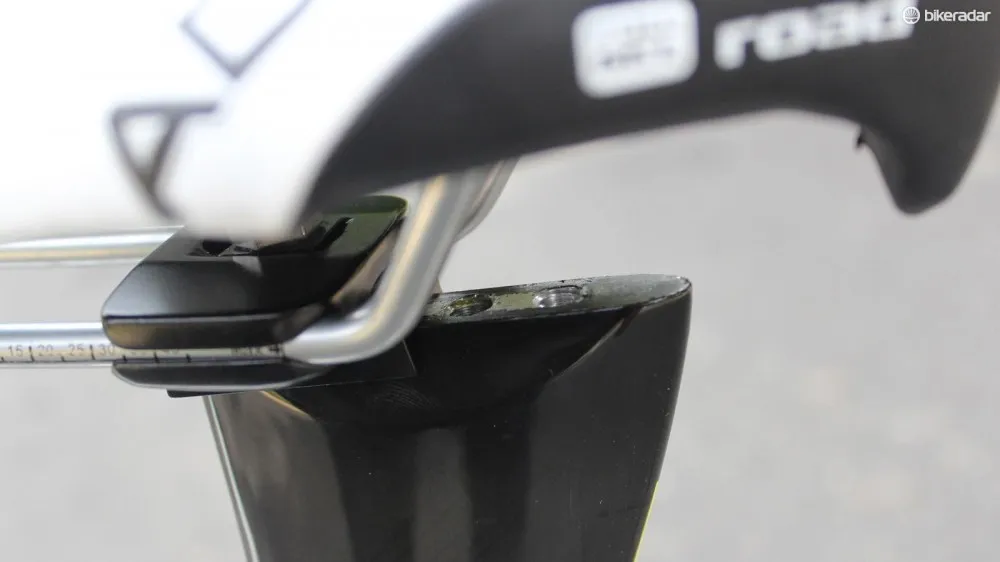
The seatpost has four positions. We had to slam the saddle and put it in the foremost position to get our fit dialed
Although the fit might not be for everyone, the ISM Adamo perch is an excellent solution for a wide range of riders, if the racks of high-profile triathlons around the world are any indication. The seatpost clamp can be bolted down into any of four holes fore and aft along top of the aero seatpost. This effectively changes the seat tube angle, Boardman says, from 76 to 79 degrees.
As for Shimano Ultegra Di2 — is there anyone out there not convinced of its merit? It's an excellent groupset with precision, ultra-low-maintenance performance. Being able to rapidly move through the gears with a press of a button at the end of the aero extensions is exactly what riding a TT/tri bike should feel like — cool and fast.
That said, why Boardman choose not to take advantage of one of Di2's greatest strengths — the ability to use remote shifting — is utterly baffling. Having to shift only at the extensions is one of the great frustrations of riding a TT/tri bike. Being able to shift while on the cowhorns at the brake levers makes riding much less awkward. Yes, while racing you won't need to shift much here, but most training isn't done in a world free of traffic.
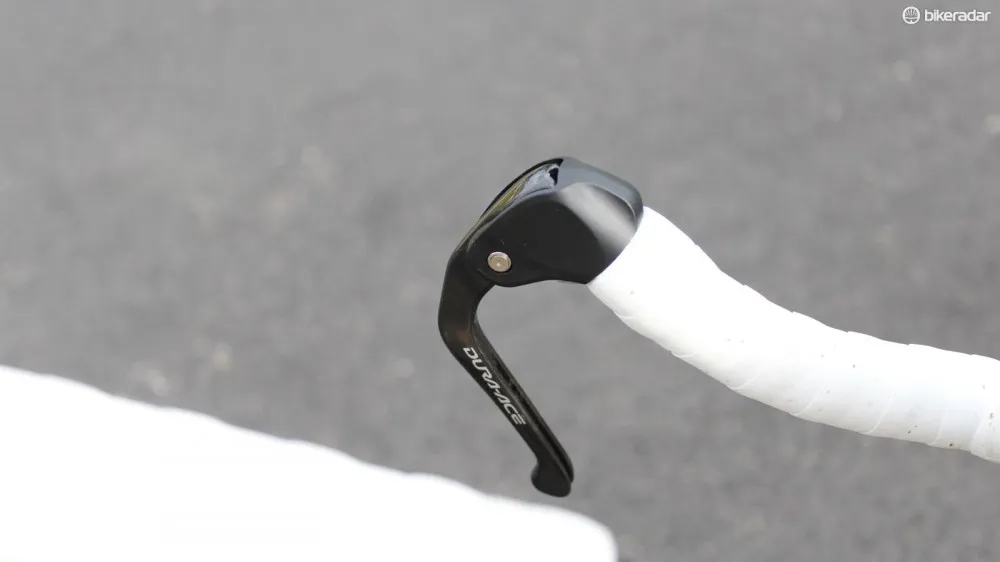
Why are there no Di2 shifters here? The lack thereof relegates this bike to the same awkwardness as one with cable-actuated derailleurs
